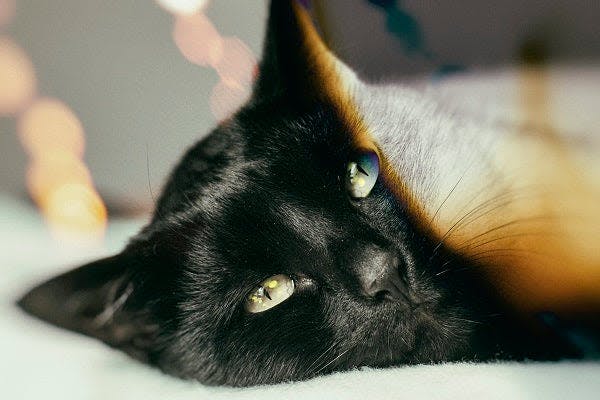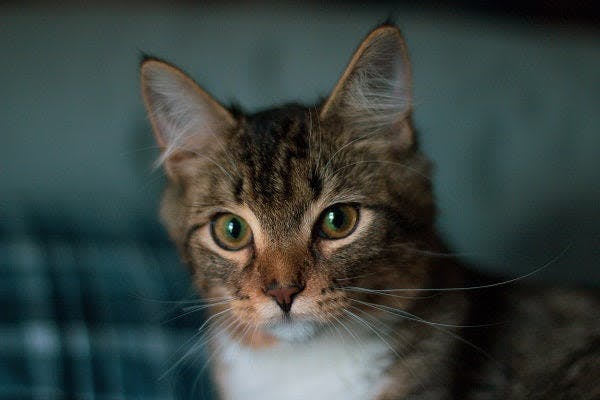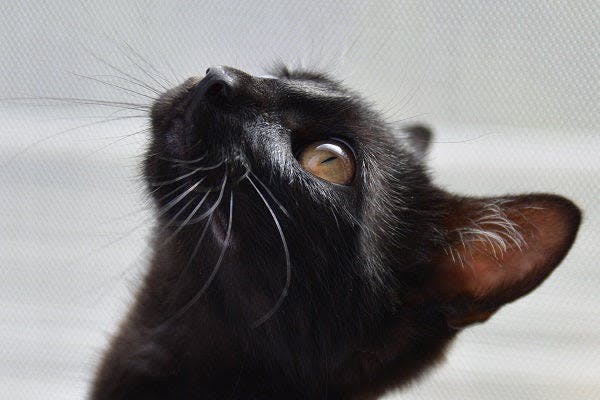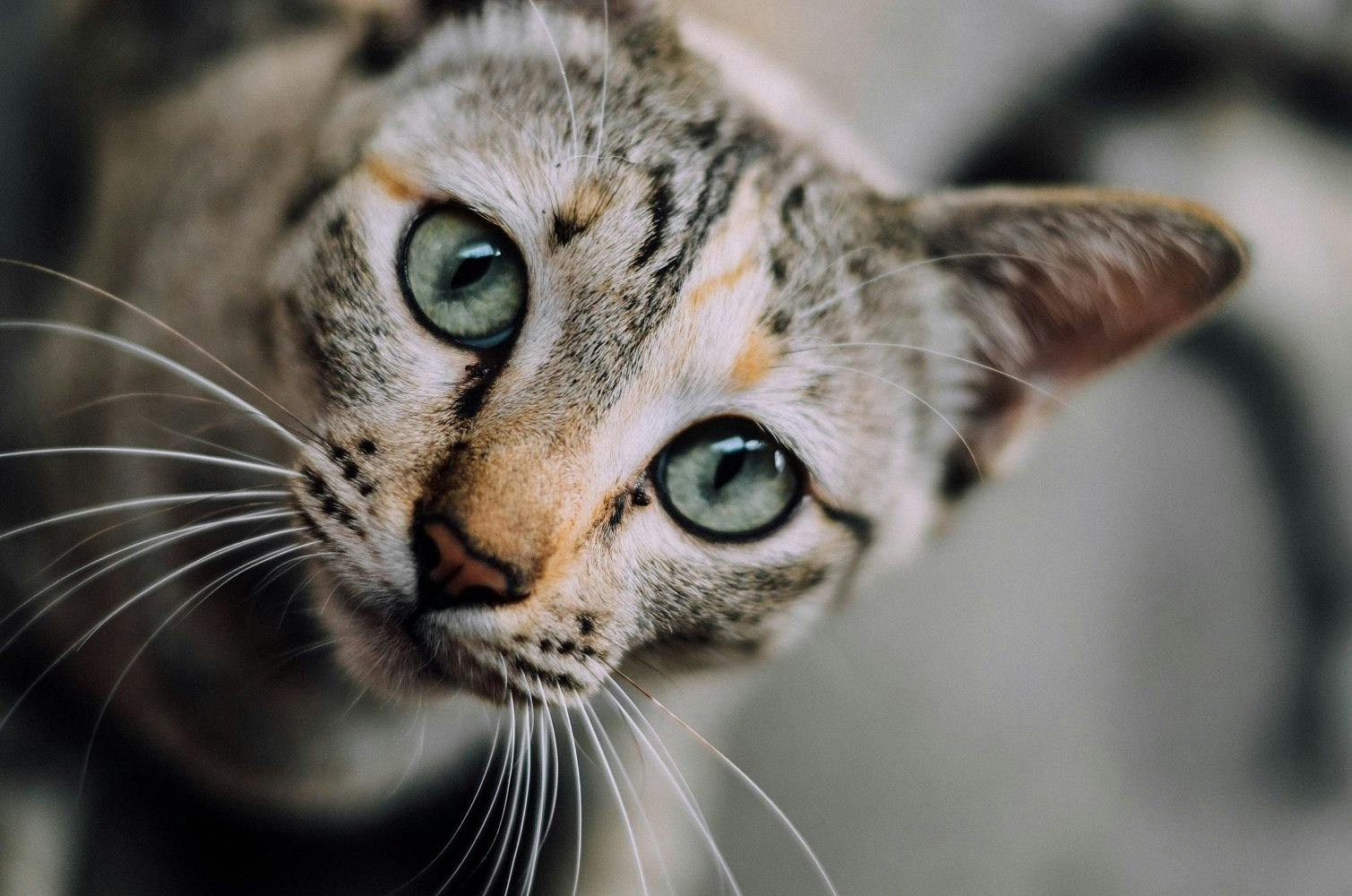One of the most important senses that helps cats interact with their environment is their hearing. Some cats may suffer from partial or complete hearing loss, particularly as they age, which can profoundly impact their perception of the world. Here is what you need to know about hearing loss in cats.
Background information
In the wild, cats rely strongly on their sense of hearing, as it helps them monitor their environment and locate prey. Their ears are built similarly to those of other mammals, which are composed of the outer, middle and inner ear.
The outer ear consists of the pinna (the external triangular part) and the ear canal. The outer ear picks up sound waves, which go through the ear tunnel into the middle ear. A cat’s outer ear is connected by 27 muscles, which give it the ability to rotate its ears by 180°. This is why cats are able to swivel their ears in the direction of the source of a sound in order to pick it up more efficiently.
The middle ear contains the eardrum and ossicles, tiny bones which vibrate in response to sound waves. In the inner ear, a structure called the organ of Corti, consisting of tiny membranes and hair cells, responds to these vibrations by moving and bending.
This movement then sends electrical signals to the brain. The inner ear also contains the vestibular system, which provides a sense of balance and orientation. On the outer base of the outer ear, there are folds of skin forming small slits. These slits are called Henry’s pockets and their function remains unclear.
Cats can hear a variety of sounds that are beyond the capacity of human ears. With the ability to pick up frequencies ranging from 48 HZ to 64 kHZ, cats have an exceptionally broad hearing range. For reference, dogs’ hearing range is from 67 HZ to 45 kHZ, and the hearing range of humans is from 64 HZ to 23 kHZ. Cats can also determine the difference between the time of arrival of a sound and the intensity of that sound, which helps them locate the sound’s source.
Causes of hearing loss
Hearing loss in cats can be caused by a number of factors. Most commonly, feline deafness is associated with age, but it can also be congenital (inherited) or occur at a young age. Hearing loss can be caused by conduction (when the sound waves can't physically reach the nerves in the ear), neural damage, certain toxins and drugs, chronic inflammation of the outer, middle or inner ear, or genetics.
Conduction can occur due to infections, tumors, or ear drum rupture. Neural damage leading to hearing loss may be the result of degenerative nerve changes, underdevelopment of the hearing neural receptors, cancer of the hearing nerves, infections, or trauma in the ear damaging the hearing nerves.

Genetically determined deafness seems to be closely associated with the white spotting gene and the dominant white gene (excluding the albino white gene), as well as with certain cat breeds. Deafness in white cats is more common among those cats with blue eyes or with heterochromia. This is because the white gene can occasionally cause the degradation of the cochlea (the part of the inner ear involved in hearing) in addition to disrupting melanocyte migration into one or both eyes.
Thus, the white gene is associated both with lighter eye coloration in one or both eyes, as well as hearing impairment in one or both ears. Some breeds which seem to be associated with a higher risk of deafness are: white Cornish Rex, white Devon Rex, white Maine Coon, white Manx, white Oriental Shorthair, white Persian, Ragdoll and white Scottish Fold.
Symptoms and diagnosis
Deaf cats are typically unresponsive (or less responsive) to everyday sounds, their names, and squeaky toys; they also don't wake up by noise. Deaf kitties also tend to be more sensitive to smells and temperature, and they may meow louder than other cats. If you suspect your cat is suffering from partial or complete hearing loss, your vet will ask for your cat's thorough history of health and symptoms. The diagnosis will include the physical examination of the ear canal which can be followed by radiography or MRI.

Treatment and prognosis
If a cat develops partial or complete deafness at birth or at an early age, this indicates congenital causes, which are typically irreversible. If the hearing loss was caused by inflammation of certain injuries, then the hearing may be restored after treatment of the underlying cause.
Luckily, cats suffering from permanent partial or complete deafness can quickly accommodate to their disability, and they will learn to rely on their other senses to communicate with their environment. The adjustment period for cats who gradually develop hearing loss may take a little bit longer both for the cat and you.
If you're living with a deaf kitty, make sure to always be patient and careful with them. Try to replace all aural cues (i.e. calling or clapping) with visual cues. They can't react to your voice, so you should come up with visual cues to stimulate and call them. To call for your cat, you can try crouching and motioning with your hand for your cat to come. You can also design a visual cue for feeding times, such as flicking the light a few times.
Cats are exceptionally smart and, with a little time, they will reorient themselves and figure out the new signs faster than you might expect. It is important to remember that deaf kitties can be easily startled if approached from behind or if awoken rudely, so do your best not to scare them by picking them up without an introductory pet or hello. And remember, deaf cats should be let outside only under strict supervision!

Hearing impairment can create living difficulties for cats, especially if the impairment is late on-set. While hearing loss in cats can be reversible and treatable in some cases, many cases of deafness are irreversible and, if partial, can be progressive. Luckily, deafness is often painless and your pet can adapt to life with it quickly and successfully.
Do you have some insightful tips for all hoomans living with deaf kitties? Share with us-- let’s learn together!
